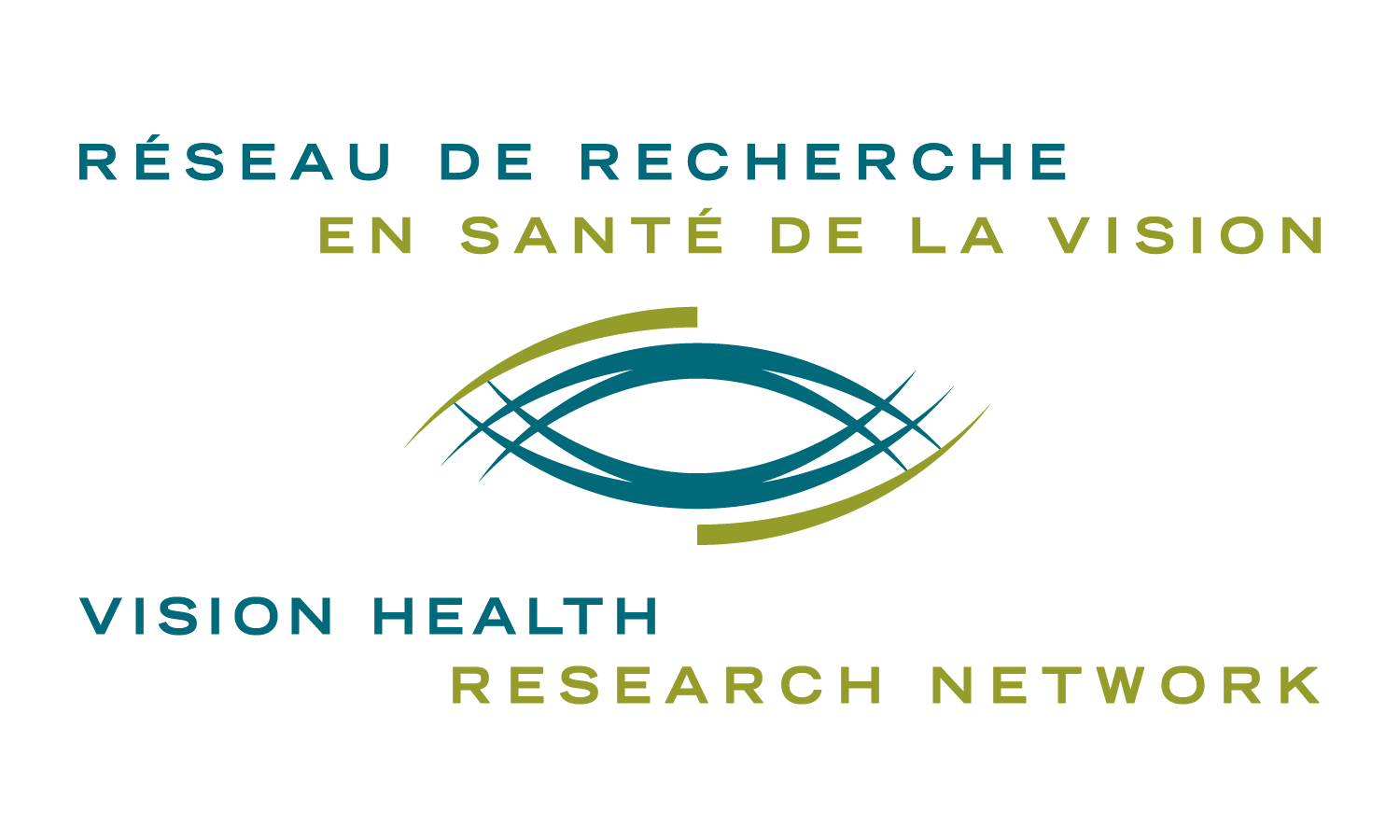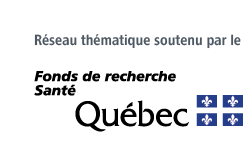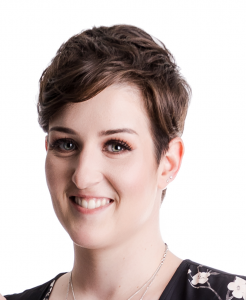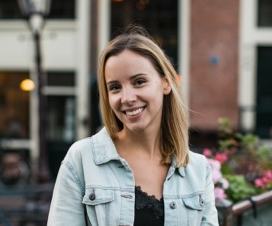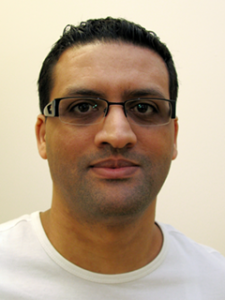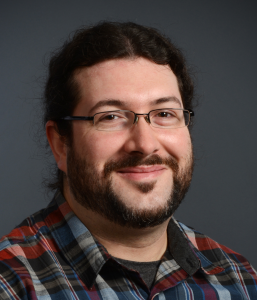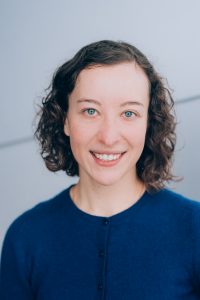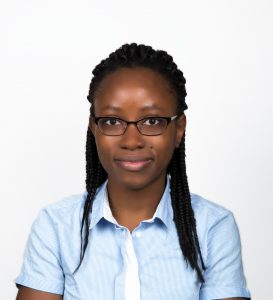2018-2019 Vision Network Publication Award Laureates
Jessica AGOSTINONE
PhD Student, Université de Montréal
Laboratory : Dr Adriana Di Polo
Publication: Agostinone J, Alarcon-Martinez L, Gamlin C, Yu WQ, Wong ROL, Di Polo A. Insulin signalling promotes dendrite and synapse regeneration and restores circuit function after axonal injury. Brain. 2018 Jul 1;141(7):1963-1980.
During my university curriculum, I first carried out a Master’s degree in Neurosciences in the laboratory of Dr Adriana Di Polo. I then had the opportunity to do a fast-track master’s to Ph.D. program. The acquisition of an extensive expertise in vision and microsurgery in mice allowed me to be invited to do a research stay in a renowned laboratory in the US and to participate in several collaborations.
*** Relève-étoile Jacques-Genest Award – FRQS – December 2018
***
Camille COUTURE
PhD Student, Université Laval
Laboratories : Drs Lucie Germain and Sylvain Guérin
Publication: Couture C, Desjardins P, Zaniolo K, Germain L, Guérin SL. Enhanced wound healing of tissue-engineered human corneas through altered phosphorylation of the CREB and AKT signal transduction pathways. Acta Biomaterialia. 2018 Jun;73:312-325
I am a PhD student in Cellular and Molecular Biology at Université Laval located in Quebec City. My research takes place at the Centre Universitaire d’Ophtalmologie (CUO-Recherche) of the CHU de Québec. I began my Bachelor’s degree in Biomedical Sciences at Université Laval in 2011, to gain experience in fundamental research. During my studies, I had the opportunity to work as a trainee in several research centers. In addition to my internships at CUO-Recherche, I had the chance to work in different disciplinary fields, including asthma and male infertility. However, because of my passion for ophthalmology and my ease in tissue engineering, I chose to pursue my Master’s degree in this domain.
My PhD at CUO-Recherche concerns the study of cellular and molecular processes that occur during corneal wound healing. More precisely, I am interested in genes whose expression is modulated to allow an adequate wound closure of the cornea. As a model, I use human tissue-engineered corneas, which are reconstructed using the protocol first elaborated by the LOEX in Quebec City. Human tissue engineered corneas are useful to study many aspects of the cornea prior to the use of post-mortem corneas or animal models.
***
Hosni CHERIF and François DUHAMEL
PhD Students, Université de Montréal
Laboratories : Drs Jean-François Bouchard (HC) and Sylvain Chemtob (FD)
Publication: Cherif H*, Duhamel F*, Cécyre B, Bouchard A, Quintal A, Chemtob S, Bouchard JF. Receptors of intermediates of carbohydrate metabolism, GPR91 and GPR99, mediate axon growth. PLoS Biol. 2018 May 17; 16(5) *equal contribution
Hosni CHERIF: Hosni Cherif received his bachelor’s degree of science in Biochemistry from Université du Québec à Montréal in 2009. Afterwards, he started his graduate work at the Université de Montréal in the laboratory of Pr. Jean-François Bouchard. Hosni was awarded his doctorate degree in Vision Science/Cell and Molecular Biology in 2016. His thesis project demonstrated, for the first time, the involvement of G-protein coupled receptors (GPCRs) in the growth and guidance of axons of ganglion cells retina during the establishment of the visual circuitry. Presently and as a postdoctoral fellow, he works to identify novel therapeutic targets for the treatment of spine disorders and new biomarkers that could enhance classic treatments.
Hosni received a Vision Network recruitment grant, a joint PhD scholarship from the Faculty of Graduate Studies and the School of Optometry (FESP-EOUM), five scholarships from the Vision Sciences program. During his postdoctoral training, he received the Cole Foundation, Mitacs-Accelerate, McGill University Health Center and Oral and Bone Health Research Network Fellowships. He presented his project in several national and international scientific conferences and the excellence of his work was underlined by the subsequent receipt of several awards of the Vision Health Reseach Network for the best poster presentation in 2011 and 2012 and for the best publication in 2015 (Network vision-FRQS) and in 2016 (Brain Star Award-CIHR).
François DUHAMEL: Following a bachelor in biochemistry obtained at the Université de Montréal, François carried out his master in pharmacology at the Institut de Recherche en Immunologie et Cancérologie (IRIC), under the supervision of Dr. Sylvain Meloche. During his master, he developed an expertise in cellular growth and signalling, his research project focusing on the activation of the Jak/Stat pathway by G protein-coupled receptors (GPCRs). Thereafter, François proceed to obtain his bachelor of pharmacy at the Faculté de pharmacie of Université de Montréal, during which he received numerous awards of excellence, such as the Centennial Leadership award from the Canadian Pharmacist Association and the National Summer Student Research Program award from Merck Frosst Canada.
By then, having become a clinician-pharmacist, François started his PhD in pharmacology by joining Dr. Sylvain Chemtob’s team at CHU Ste-Justine’s Research Center. His doctoral projects focus on the implication of GPCRs, such as receptors of intermediates of carbohydrate metabolism, in the vascular development of the retina and their roles in ischemic retinopathies. During his PhD, François took part in nine articles up to now and presented his projects in multiple national and international scientific meetings (ARVO, Gordon Research, etc.). Moreover, he obtained numerous PhD scholarships (FRQS, CIHR Banting & Best, Stars Foundation & CHU Ste-Justine’s Foundation, FES-Hydro-Québec) and three awards for best presentation at a scientific research day (oral and poster).
***
Ariel Wilson
Postdoctoral Fellow, Université de Montréal
Laboratory : Dr Przemylaw (Mike) Sapieha
Publication: Wilson AM, Mazzaferri J, Bergeron É, Patskovsky S, Marcoux-Valiquette P, Costantino S, Sapieha P, Meunier M. In Vivo Laser-Mediated Retinal Ganglion Cell Optoporation Using KV1.1 Conjugated Gold Nanoparticles. Nano Lett. 2018 Nov 14;18(11):6981-6988
Ariel Wilson is a postdoctoral fellow in biochemistry in Dr. Sapieha’s laboratory at the Maisonneuve Rosemont Hospital Research Center. She completed a postdoctoral fellowship in Dr. Meunier’s laboratory at Polytechnique Montreal in engineering physics (2014-2017). Ariel completed her PhD in Dr. Di Polo’s laboratory in Pathology and Cell Biology at the University of Montréal (2007-2014), her MSc in Dr. Albert’s laboratory in Cell and Molecular Medicine at the University of Ottawa (2004-2007) and her BSc in Biology at McGill (2001-2004). Ariel was awarded a prestigious National Science and Engineering Research Council postdoctoral scholarship (2015-2017) and the METITIS fellowship (2014-2015) for her research at Polytechnique Montreal. She has 13 peer-reviewed publications including first author publications in Science Immunology, Nano Letters (IF 12), and Journal of Neuroscience. Ariel has given 31 presentations in national and international meetings, published 38 abstracts and has 2 patents. She won the HMR best publication prize in 2018 for her Science Immunology publication, was awarded 7 best presentation awards in various conferences, and obtained 5 travel awards. Ariel has extensive research experience, having worked in the fields of retinal gene therapy and retinal cell survival (PDF, PhD), myeloid cell biology in the context of obesity (PDF), dopaminergic cell signaling in the context of cell transformation (MSc) and tight junction protein expression during oocyte development (BSc).
***
Corinne ZINFLOU
Étudiante au doctorat, Université Laval
Laboratoire : Dr Patrick J. Rochette
Publication: Zinflou C, Rochette PJ. Absorption of blue light by cigarette smoke components is highly toxic for retinal pigmented epithelial cells. Arch Toxicol. 2018 Nov 13. doi: 10.1007/s00204-018-2344-3.
I have a Bachelor of Science degree in biology from Laval University. During my undergraduate training, I
carried out a research internship in Pr. Sylvain Guérin (PhD) laboratory in the CHU de Québec Research Center, where I was involved in the study of molecular mechanisms governing α5 integrin gene expression
during corneal wound healing. Given my interest in health/environment relationship issues, I completed a Master’s degree in experimental medicine (with a specialization in environmental toxicology) at Laval University, under Pr. Pierre Ayotte (PhD) supervision in the biomarkers laboratory of the Quebec toxicology center (Institut National de Santé Publique du Québec). There, I developed a method using DNA repair capacity as a biomarker to assess individual susceptibility to a chronic exposure to arsenic, an ubiquitous environmental pollutant.
I started a PhD in Pr. Patrick Rochette (PhD) laboratory in the CHU de Québec /Laval University Research Center. I am investigating the toxic potential of light radiations reaching the eyes, and my PhD project consists of two major parts: the first focuses on the consequences of the oxidation generated in the cornea following an ocular exposure to ultraviolet-A radiations; the second aims to assess blue light effects on retinal pigment epithelium integrity. Besides my thesis project, I contributed to a study, which goal was to assess ocular tissues differential aging, using telomere shortening analysis. This study led to a paper for which I am co-first author. The article presented hereby is my third paper. It is the result of the works undertaken in the second issue of my thesis. During my PhD training, I developed a much diversified technical skill and a great knowledge of oxidation-related molecular mechanisms. I had the opportunity to present my works in many congresses, and obtained an excellence prize in oral presentation category from the VHRN in 2016 and at the Journée Annuelle de la Recherche en Ophtalmologie in 2018. I received a travel award to present my results in 2016 at the biannual meeting of the American Society for Photobiology held in Tampa Bay and at ARVO 2018 annual meeting in Honolulu.
